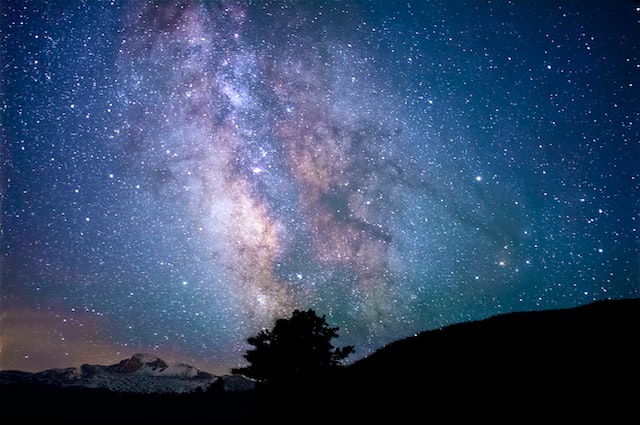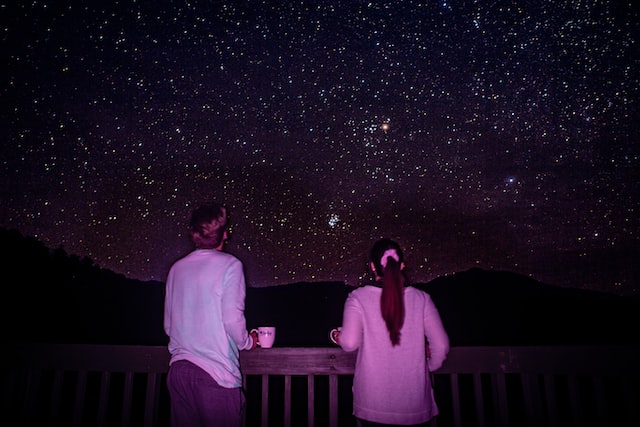The major draw at the best stargazing locations across the world is the clear skies and brilliant stars.
Plan a vacation to one of the top stargazing locations in the world if seeing planets, constellations, and even the Milky Way is on your bucket list. Fortunately, there are a few special places on earth that provide breathtaking views of the night sky and low light pollution, enabling even amateur astronomers to glimpse the stars and enjoy an unforgettable astronomy experience. The following article lists the top stargazing locations worldwide.
The Atacama Desert, Chile

Northern if you remove the North and South Poles, Chile’s bleak Atacama Desert is the driest location on Earth. It only receives a few millimeters of rain each year, with the driest areas getting even less than one millimeter.
Although the arid circumstances in this desolate region are not especially conducive to plant and animal life, they are ideal for stargazing because of the simultaneous existence of a high altitude, a sparse cloud cover, and almost no radio interference or light pollution.
The most famous constellations in the Southern Hemisphere, such as the Tarantula Nebula, the Fornax Cluster of galaxies, the Southern Cross, and even the Large Magellanic Cloud, a satellite galaxy of the Milky Way, can be seen in stunning clarity from the Atacama Desert thanks to its nearly perfect visibility.
Natural Bridges National Monument, Utah, United States.

The International Dark-Sky Association, the foremost group fighting light pollution globally, designated the Natural Bridges National Monument, located in the isolated Lake Powell, Utah, as the first recognized International Dark Sky Park.
The designation affirms that the region has some of the world’s darkest and clearest sky and recognizes the efforts made to maintain this quality, placing darkness as a resource worth saving and conserving.
The “river of light” phenomenon produced by the Milky Way as it rises above the Owachomo Bridge, a naturally occurring rock feature, is the major draw of these gloomy skies.
Iriomote-Ishigaki National Park, Japan.

As the second location in Asia (the first being Yeongyang Firefly Eco Park in South Korea), Iriomote-Ishigaki National Park in Japan’s Okinawa Prefecture was the first location in the country to gain certification from the International Dark Sky Places program.
On the Yaeyama Islands, near the Tropic of Cancer, the park is situated, and from there, you can view up to 84 of the 88 constellations recognized by the International Astronomical Union. The time of year and the weather, however, affect the viewing conditions on any particular night.
Kruger National Park, South Africa.

The more than 7,500 square mile Kruger National Park is the country of South Africa’s largest game reserve. Most tourists travel to Africa in search of the fabled Big Five: lions, leopards, rhinoceroses, elephants, and water buffalo. They also desire to experience a lavish safari lodge stay.
The flat savanna and bushveld of the park, however, make it the perfect place for training binoculars on the Southern Cross, Scorpio, and Saturn’s rings because of its isolation and absence of light pollution. On every trip to Kruger National Park, you must schedule a midnight astronomy experience in addition to your game-drive agenda.
Mauna Kea, Hawaii, United States.

The Hawaiian Islands, located around 2,500 miles southwest of California and dotted with tall volcanic peaks, has developed into one of the top tourist attractions for astronomers worldwide. The Mauna Kea summit on the Big Island is maybe the best place in Hawaii to see the night sky.
Mauna Kea Observatory is located not far from Mauna Kea’s 13,803-foot peak, high above the town of Hilo. It houses thirteen of the biggest and most potent telescopes in the world, making it a significant center for astronomy.
Make sure to stop at the visitor information station to acclimatize so you don’t have altitude sickness. Mauna Kea is also one of the few spots in the world where you can drive from sea level to approximately 14,000 feet in about 2 hours.
Pic du Midi, France.

For us, Pic du Midi in the French Pyrénées Mountains is a suitable enough location if NASA scientists used it to capture photos of the Moon’s surface in advance of the Apollo missions. A mountaintop observatory is poised above the clouds at the peak, which is reachable by cable car from La Mongie.
Additionally, the reserve includes the Pyrénées-Mont Perdu World Heritage Site and the Pyrénées National Park in France. You may even schedule an overnight stay at the Pic for an exceptional night’s sleep beneath the stars.
Kiruna, Sweden

Remote Kiruna lies less than 30 miles from Esrange Space Center, Europe’s largest civilian space center. Esrange Space Center is situated north of the Arctic Circle, close to Sweden’s border with Norway and Finland.
Swedish Lapland is the perfect place to go if you want to be astounded by the wonders of the night sky. In addition to gazing up into the night sky in wonder at the sea of sparkling stars, you could also be fortunate enough to see the aurora borealis, often known as the northern lights.
If you want to enjoy one of the world’s greatest opportunities to see the northern lights, take a bus to Abisko and ride a cable car to the Aurora Sky Station.
La Fortuna, Costa Rica.

The tropical rainforest isn’t typically associated with stellar astronomy, but Costa Rica just could surprise you. This Central American nation is in an exceptional position to observe both northern and southern stars due to its proximity to the equator.
It’s one of the few locations above the equator where the Magellanic Clouds may be seen. During the first round of the globe in the 1520s, explorer Ferdinand Magellan and his team made the first observation of these two erroneous dwarf galaxies, which circle the Milky Way Galaxy. The greatest time to observe them is during the dry season, which lasts from around December to April.


